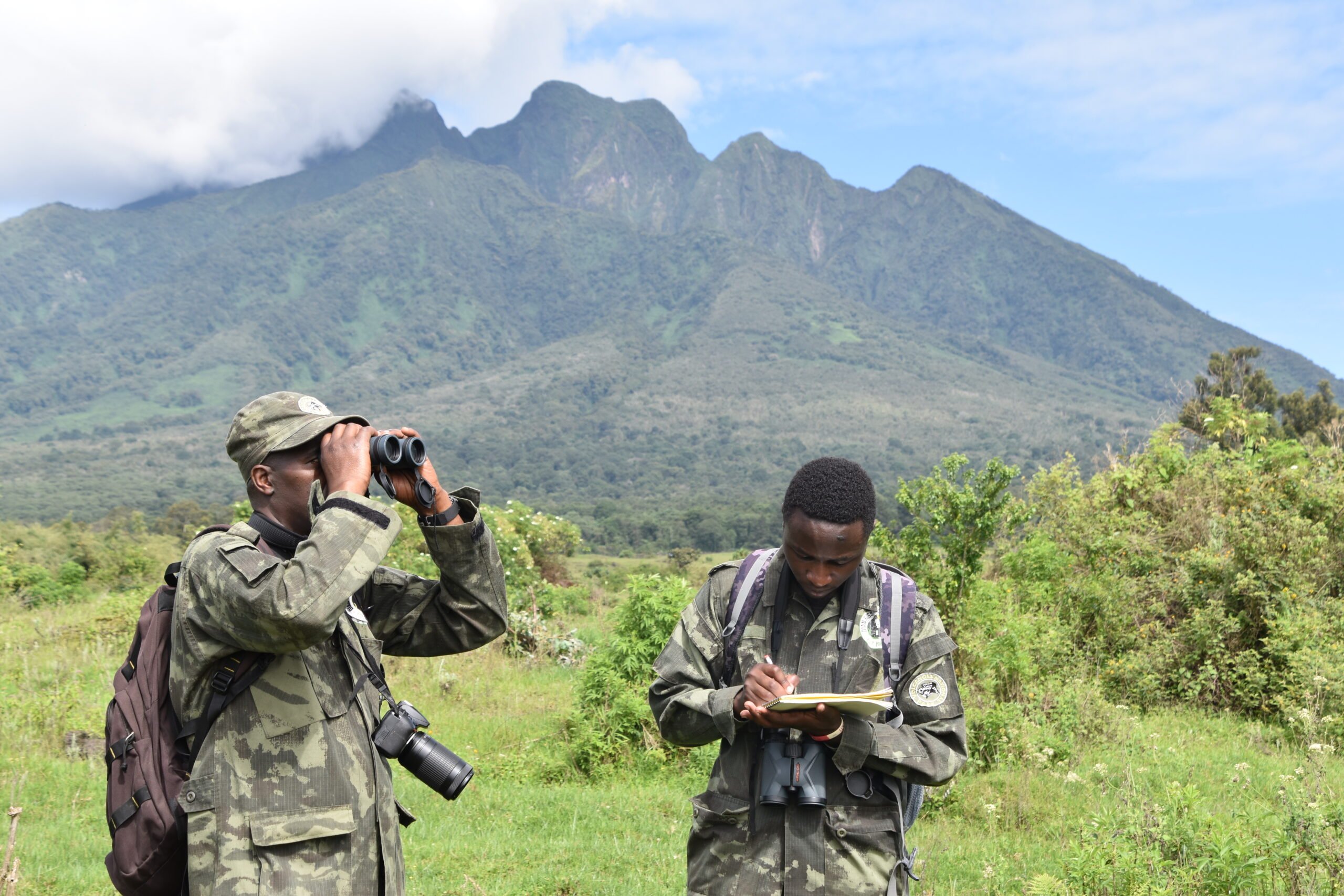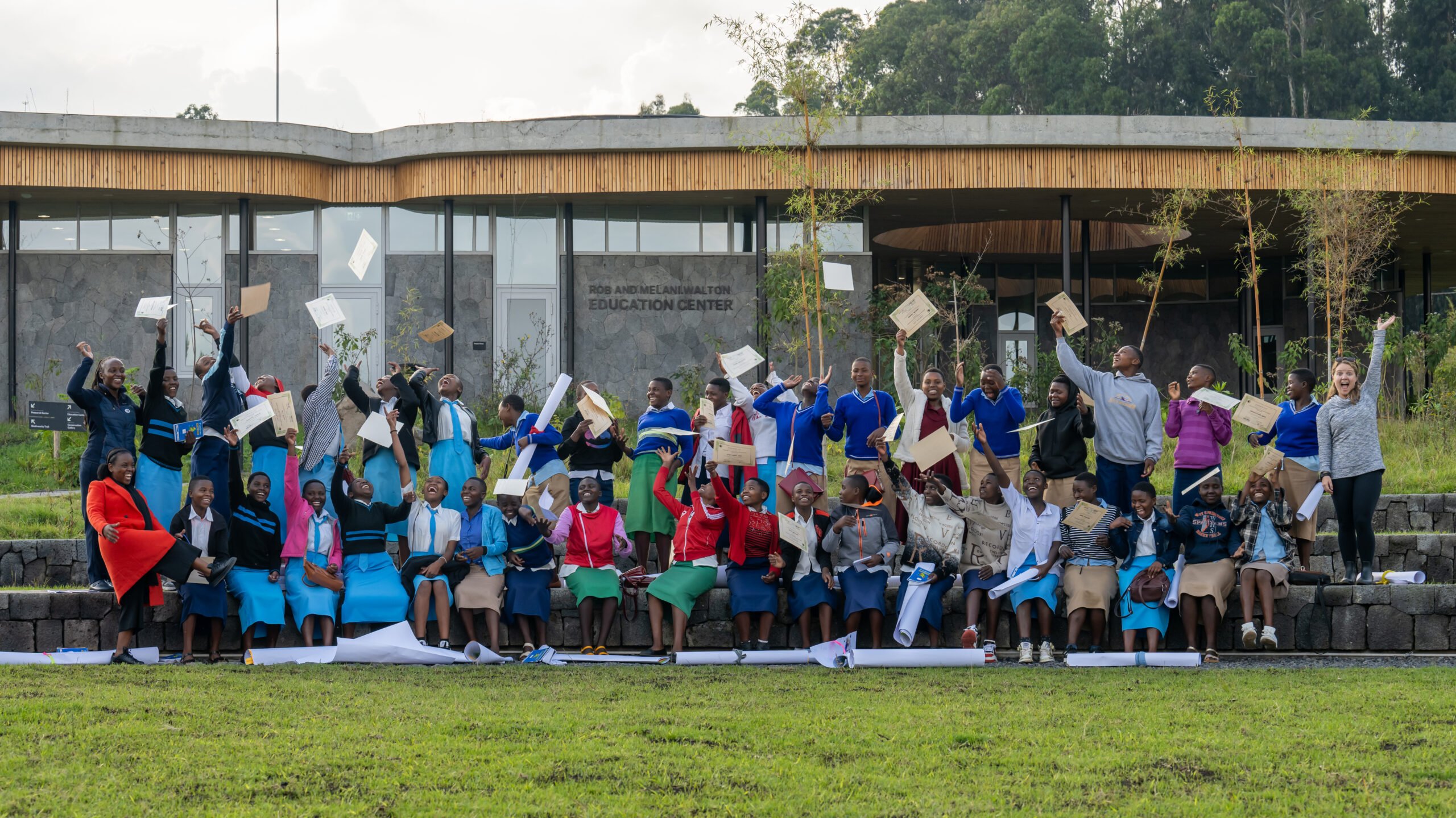Fossey Fund intern Emile Mugabo recently started a study on the distribution and regeneration of the Prunus africana tree, also known as the African cherry tree in Rwanda’s Volcanoes National Park.
Prunus Africana is a large evergreen tree whose fruits are favored by the mountain gorillas. Dian Fossey even mentioned their fondness for this seasonal fruit in her book “Gorillas in the Mist,” after noticing the gorillas climbing high in the trees to find the small fruits during the trees’ brief fruiting season. However, this tree is also vulnerable to demand from human populations for medicinal and other uses.

Emile started his research with the Fossey Fund when he was a student at the University of Rwanda and was among those chosen to do their senior thesis work with us. He began by studying a variety of the plants on our Ellen campus, located next to the park.
“Since we have planted many young Prunus africana trees at the campus, I felt inspired to give a hand to its conservation through scientific research, because there were no studies about it in Volcanoes National Park,” he says. “The tree has very interesting qualities and history, so I decided I wanted to focus on the conservation of this threatened plant species.”
Prunus africana is also an important part of the gorilla’s forest ecosystem. “These trees provide habitat for birds, insects, and epiphytic plants like orchids, ferns, mosses, fungi and lichens,” says Emile. In addition, it is one of the few trees in the gorilla ecosystem that produces fruits, which the gorillas, as well as golden monkeys, are observed to enjoy eating.
Emile’s study is looking at the rate of regeneration of these trees and the factors that influence this process. “Once we gain this crucial information about the regeneration requirements and the ecology of the Prunus africana in Volcanoes National Park, it can be the foundation for helping with reforestation and park expansion, as well as for agroforestry. People can start to grow these trees on their own, without harming the wild populations,” he adds.
This research will also be a good starting point for future studies, such as how seeds are dispersed by the gorillas and other animals who eat this fruit.








